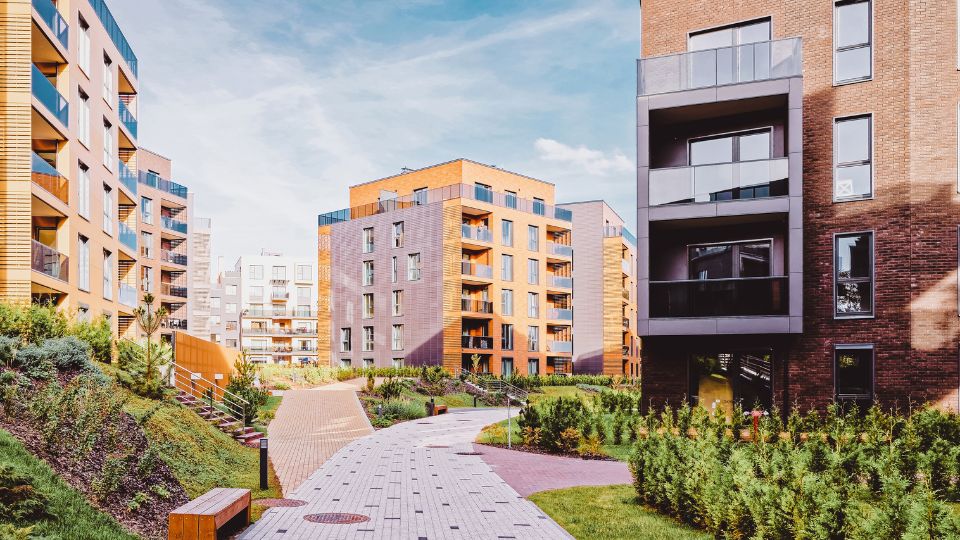The U.S. housing market in 2024 is experiencing a significant downturn. Home sales turnover has dropped to a new historic low, with only 2.5% of housing units changing hands this year. This figure is a 31% drop compared to 2019 and contrasts sharply with rising property values, creating a paradoxical environment for both buyers and sellers.
The last time the market experienced such disruption was during the Great Recession, but even then, sales were higher than what we’re seeing today.
The Impact of Low Home Sales on the Housing Market
In 2024, the housing turnover rate of 2.5% marks the lowest level in decades, leaving the real estate market at a standstill. Despite historically low home sales, property values have continued to rise due to fierce competition and limited inventory. Taylor Marr, Deputy Chief Economist at Redfin, explains that many homeowners feel “locked in” by their low mortgage rates, choosing to wait out the high-rate environment instead of selling their properties
To understand the magnitude of the current downturn, we can calculate the turnover rate using available data:
- In 2024, the U.S. has 146.6 million total housing units.
- Around 3.67 million homes have been sold so far.
We divide these two numbers and the resulting turnover rate is: 2.5%
This percentage is dramatically lower than the turnover rate during past housing booms, such as in 2005, when 5.69% of homes were sold. Here’s how that was calculated:
- In 2005, 7.08 million homes were sold out of 124.4 million housing units resulting in a turnover rate that was double what it is today.
- The calculation for 2005 results in a whopping turnover rate of 5.69%. It would seem that a lot of real estate agents and loan officers had a banner year way back in 2005.
Comparing Low Home Sales to Other Key Years
The table below summarizes home sales and turnover rates in key years, providing context for 2024’s historically low home sales:
| Year | Homes Sold (millions) | Total Housing Units (millions) | Percentage Sold |
| 2005 | 7.08 | 124.4 | 5.69% |
| 2008 | 4.12 | 129.9 | 3.17% |
| 2009 | 4.34 | 130.8 | 3.32% |
| 2010 | 4.19 | 131.8 | 3.18% |
| 2021 | 6.12 | 142.2 | 4.30% |
| 2024 | 3.67 (est.) | 146.6 | 2.5% |
This table shows how 2024’s low home sales compare not only to boom years like 2005 but also to the challenging economic period of the Great Recession.
Even during the recession circa 2008-2010, the percentage of homes sold was consistently higher than in 2024.
The Role of Rising Mortgage Rates and Recent Policy Changes
In 2024, one of the primary drivers of low home sales turnover was the sharp increase in mortgage rates. With rates reaching above 7.0% for 30-year fixed mortgages, homeowners who had locked in rates at or below 3% during earlier periods were hesitant to sell earlier in the year. They feared having to take on significantly higher payments if they decided to move.
At the same time, buyers faced even greater challenges affording historically high home prices. This affordability crisis was exacerbated by higher rates pushing potential mortgage payments to unsustainable levels for the vast majority of homebuyers. The dual nature of these factors, which affected both homeowners and homebuyers, ultimately lead to the current market freeze.
Despite the Fed’s recent 50 basis point reduction, the impact on sales has been minimal so far. While lower rates can make borrowing more affordable, the small reduction hasn’t been enough to entice many homeowners to list their properties or push buyers back into the market. The combination of rising property values and only slightly lower rates continues to stifle activity.
This has driven home sales to historically low levels, even lower than in 2008, when the housing market collapsed under the weight of subprime lending and foreclosures. In 2008, the percentage of homes sold was 3.17%, with 4.12 million homes sold out of 129.9 million total housing units.
Instead of selling, many homeowners are staying put and benefiting from the ever-rising equity in their homes. Many are doing this by refinancing their existing loans and opting for a larger loan amount with cash out. Others are keeping their low-rate first mortgage in place but adding second mortgages or tapping into Home Equity Lines of Credit.
The Outlook for Low Home Sales in 2024 and Beyond
As 2024 progresses, it is important to remember that the 2.5% turnover rate is not final. The year isn’t over, and the current percentage will likely rise as more homes are sold through the remainder of the year. However, this increase will likely be modest.
Some factors that could push the percentage higher include more home sales during the last quarter of the year. Additional sales could be driven by seasonal demand and even greater potential future rate cuts.
On the other hand, a potential increase in housing supply, which is expected as some homeowners start listing properties to capitalize on high prices, could mitigate a sharp rise in sales. This new supply, combined with sustained high mortgage rates, may limit any significant improvement in the turnover rate.
As a result, while the percentage of homes sold in 2024 may increase slightly by year-end, it is still expected to remain at historic lows compared to previous decades.
Predictions for 2025: Will Low Home Sales Persist?
First of all, it’s important to note that all of this data is compiled on an overall national basis. There are significant differences between geographic areas in the United States. So, don’t compare your specific neighborhood or region to the overall trends as the data will probably not be an exact match.
Regions with higher employment and lower home prices may have better sales turnovers compared to economically declining regions. However, for the most part, the data should be somewhat accurate for most areas of the country.
Looking forward to 2025, several key factors will influence whether low home sales will continue. One of the primary drivers will be mortgage rates. If rates decrease significantly, it could unlock pent-up demand from both buyers and sellers, leading to a more active market.
However, if rates remain elevated, the low turnover trend is likely to persist, as many homeowners will remain reluctant to give up their favorable financing.
In 2025, the market may see some recovery, but the extent of this recovery will depend on how policymakers address affordability concerns and how quickly rates adjust.
For now, the low home sales trend that defined 2024 is likely to continue into the new year, with the market waiting for economic and policy changes to reignite activity.


